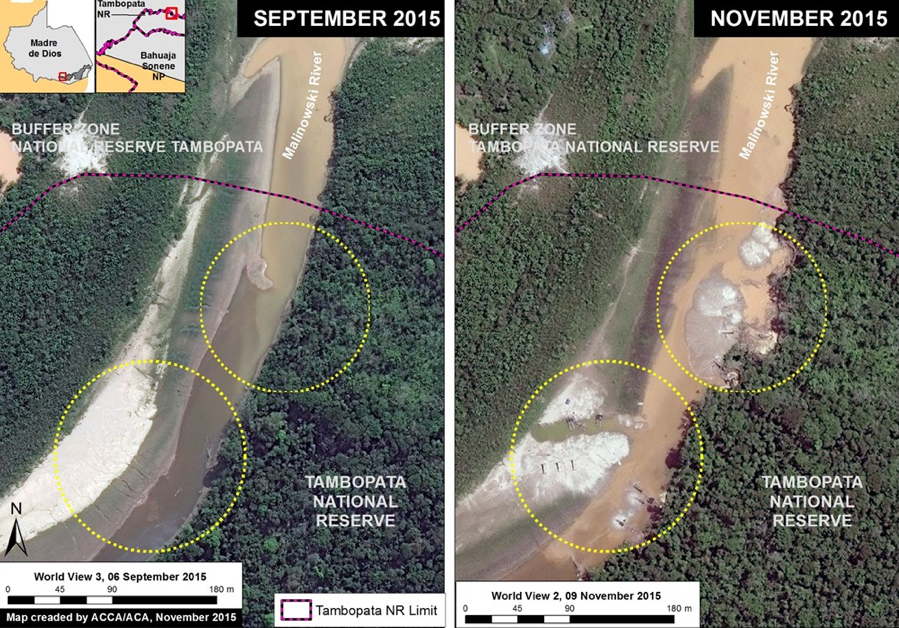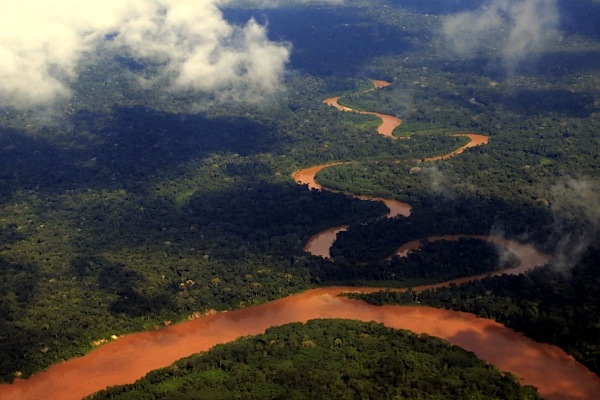Devastation caused by illegal miners in Peru reaches national reserve
The Tambopata National Reserve, in the Peruvian Amazon Basin,was created in 1990 to protect the forests adjacent to the rivers Heath and Tambopata. It is home to two unique ecosystems and very rich in terms of biodiversity. (Image Wikimedia Commons)
Recently released satellite images show that devastation from illegal gold mining activities in Peru is now reaching the Tambopata National Reserve, an important protected area in the country's southern Amazon.
According to an in-depth report by AlJazeera TV, showcased on Sunday, the reasons for the quick expansion of the environmental damage, can be found in the rudimentary techniques used by the over 30,000 illegal gold miners present in the area:
Miners chop down trees and use high-pressure water hoses to dissolve the soil, he tells us. This can turn a primary rainforest into a barren wasteland in just a matter of days.
The miners also use mercury - which binds with gold and forms an amalgam. These miners are not only exposed to toxic mercury - the chemical and its vapours when they burn it off: they're also contaminating the land and inadvertently poisoning food chains.
The story, unfortunately, is nothing new. For years, illegal miners have been eating away the country's rainforest, while the government tries to tighten the screws on illegal mining. However, the battle against illicit miners is far from over.


Recent invasion of Tambopata National Reserve. (Images courtesy of MAAP.org -Monitoring the Andean Amazon Project | Satellite images: (C)DigitalGlobe 2016)
Until recently, no one really knew the full extent of the damage, but a research team from the Carnegie Institution for Science in Washington DC, and Peru's Ministry of the Environment released in 2013 the first set of satellite images mapping the destruction.
The study showed the illicit activity had already destroyed almost 20,000 hectares of the Amazon rainforest.
The findings shocked millions and finally highlighted the devastating effect illegal miners have had in the area.
Covert gold production in the South American nation has increased fivefold since 2012, and it is estimated to provide 100,000 direct jobs in the country, 40% of which are in the Madre de Dios region, located in southern Peru.
The situation is mirrored in dozens of the countries, where gold is similarly mined and where the desperately poor often end up working in risky conditions.
Peru is the world's sixth largest gold producer, but an estimated 20% of its annual output is of unknown origin.


In July last year, armed police swooped in to Peru's Amazon basin, burning down an entire town that was home to a vast illegal gold operation.
